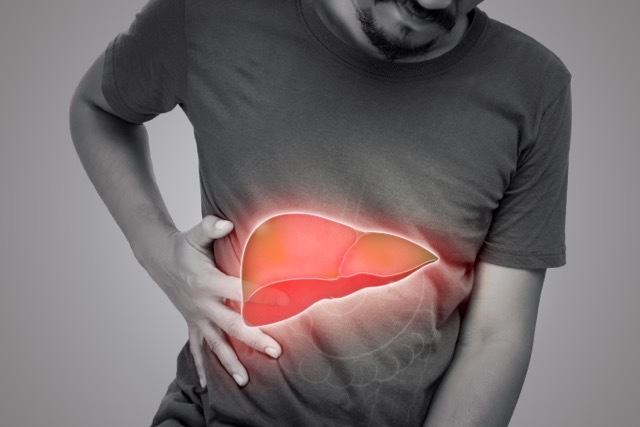
Obesity potentially linked to 18 additional cancers, expands understanding of risks
In a groundbreaking study recently published in The Lancet Regional Health – Europe, researchers have further explored the complex associations between body mass index (BMI) and the risk of developing obesity-related cancers. The study builds on previous findings and uncovers 18 additional cancers that may be linked to obesity, broadening the scope of understanding in the field of cancer research.
The rising prevalence of obesity and overweight worldwide underscores the urgency of understanding their impact on morbidity. Increasing evidence suggests that obesity is not just a health risk but may also serve as a preventable cause of various cancers. The 2016 report by the International Agency for Research on Cancer (IARC) had already established a connection between BMI and 13 specific cancers, laying the groundwork for further exploration.
Building on these earlier findings, an umbrella review later confirmed that most of these cancers were indeed linked to obesity. However, much of the existing research has focused on overall cancer risk without delving deeply into the associations between BMI and specific morphological cancer subtypes.
The present study seeks to bridge this gap by investigating potential obesity-related cancers, including their subtypes, and by quantifying the strength of these associations. The researchers utilised data from the Obesity and Disease Development Sweden (ODDS) study, drawing from an extensive database that spans several decades.
Cancer diagnoses recorded between 1963 and 2019 were meticulously identified through the Swedish Cancer Register, which classified cancers using standardised codes. The 13 cancers previously recognised by the IARC as obesity-related served as a foundation for this study, but the researchers also applied an explorative decision algorithm to identify additional cancers potentially linked to obesity. These were defined as cancers showing a positive association with increased obesity risk, either compared to normal weight or per a 5 kg/m² increase in BMI.
To determine the strength of the association between BMI and cancer risk, BMI was evaluated in categorical terms (such as underweight, overweight, etc.) or per a 5 kg/m² increment, provided there were sufficient cases—250 for categorical evaluations and 100 for incremental evaluations.
The analysis employed Cox regression models to estimate hazard ratios (HRs) and 95% confidence intervals (CIs). These models were stratified by birth year and sex, and adjustments were made for several variables, including baseline age, mode of height and weight assessment, education level, country of birth, and marital status. Additionally, for cancers known to be related to smoking, the models were repeated in individuals with available smoking data to adjust for this significant confounder. The Wald test was then utilised to examine potential interactions based on sex.
The study’s scope was vast, including 4.14 million individuals—2.01 million females and 2.12 million males—with an average baseline age of 31.3 years for females and 23.1 years for males. The average BMI recorded was 22.5 kg/m² for males and 24 kg/m² for females, with obesity prevalence noted at 9% in females and 3% in males. Over a median follow-up period of 24.2 years, 332,501 cancer cases were identified—139,685 in females and 192,816 in males. The median age at cancer diagnosis was 55.7 years for females and 63.1 years for males.
The findings revealed that obesity was associated with an elevated risk of 18 cancers (16 in females and 15 in males) relative to normal weight or per a 5 kg/m² increase in BMI. Importantly, these cancers had not previously been established as obesity-related and accounted for 15% of all cancer cases identified in the study.
For females, these potential obesity-related cancers included those of the cervix, vulva, head and neck (specifically squamous cell carcinoma), and nodular melanoma. For males, the study identified cancers of the penis, head and neck (particularly adenocarcinoma), and malignant melanoma. Moreover, both sexes exhibited increased risks for cancers of the small intestine, stomach, oral cavity, paranasal and nasal sinuses, biliary tract, adrenal glands, pituitary gland, pancreatic islets, connective tissue, parathyroid gland, and both myeloid and lymphoid neoplasms.
Interestingly, there were notable sex-based interactions in the risk of certain cancers, including malignant melanoma, lymphoid neoplasms, and cancers of the lip, head and neck, tongue, and connective tissue. Additionally, specific subtypes of some potential obesity-related cancers demonstrated a stronger association with BMI than others. When smoking was considered, the association between BMI and some cancers persisted, while it weakened for others.
Beyond these newly identified cancers, obesity was also linked to an increased risk of all established obesity-related cancers, which constituted a quarter of all cases. The hazard ratios for these established and potential obesity-related cancers were 1.17 and 1.24 in males and 1.13 and 1.12 in females, respectively.
The absolute risk of developing a potential obesity-related cancer by the age of 80 was 5.7% for males with obesity and 5.5% for those with normal weight. In females, the corresponding risks were 4.2% for those with obesity and 3.5% for those with normal weight. When considering both established and potential obesity-related cancers, the combined risk by age 80 was 14.2% for males with obesity compared to 12% for those with normal weight, and 18.7% for females with obesity compared to 16.3% for those with normal weight.
In summary, this study has significantly expanded the list of cancers potentially linked to obesity, identifying 18 new cancers across various organ systems, including the gastrointestinal tract, endocrine organs, head and neck, genitals, and haematological malignancies. While the association between BMI and these newly identified cancers was somewhat weaker in males compared to the established obesity-related cancers, it was comparable in females. The findings underscore the need for further studies that account for cancer-specific confounders to validate these associations and deepen our understanding of the complex relationship between obesity and cancer.
Read More
Gestational diabetes does not increase breast cancer risk, study finds
A recent study has found that gestational diabetes does not elevate the risk of developing breast cancer, providing reassurance to millions of women worldwide. This significant research will be presented at the upcoming Annual Meeting of the European Association for the Study of Diabetes.
Gestational diabetes, a condition that affects nearly 15% of pregnant women globally, has long been a subject of concern due to its association with various long-term health risks. These include a heightened likelihood of developing type 2 diabetes, metabolic syndrome, cardiovascular disease, chronic kidney disease, and certain mental health conditions. However, the link between gestational diabetes and breast cancer, the most common cancer among women, has remained unclear until now.
Women who are older, living with obesity, or have a family history of diabetes are at a greater risk of developing gestational diabetes. This condition, characterised by insulin resistance, has been the focus of much research due to its potential to trigger a range of health issues.
Dr Maria Hornstrup Christensen, the senior author of the study, emphasised the importance of understanding breast cancer risk factors. “Breast cancer is the most common cancer, as well as the leading cause of cancer deaths in women worldwide. It also has a very high treatment cost compared with other cancer types. If we know who is more likely to develop breast cancer, we might be able to detect it earlier when it is easier to treat, reducing deaths and treatment costs and the psychological and physical toll on women,” she said.
To investigate the potential connection between gestational diabetes and breast cancer, a team of researchers conducted an extensive study involving 708,121 women who gave birth in Denmark. Out of these, more than 24,000 women developed gestational diabetes during one or more of their pregnancies. The health outcomes of these women were tracked over an average period of 11 years, during which 7,609 cases of breast cancer were recorded.
The study’s findings revealed that women who had experienced gestational diabetes were no more likely to develop breast cancer than those who had not. This result is particularly significant given the concern surrounding insulin resistance, a key feature of gestational diabetes, which has also been linked to breast cancer in prior studies.
Dr Christensen remarked on the study’s implications, stating, “It will be reassuring for women who have had gestational diabetes to know that they are not at higher risk of developing breast cancer.”
She added a note of caution, however, highlighting the need for continued vigilance regarding other health risks. “They do, however, need to be alert to the fact that they are at higher risk of some conditions, including type 2 diabetes. And all women, regardless of whether or not they have had gestational diabetes, should be breast aware and check their breasts regularly for changes.”
This research provides a new understanding of the health implications of gestational diabetes, offering relief to many while underscoring the importance of ongoing health monitoring and awareness. The study represents a significant step forward in our understanding of the relationship between gestational diabetes and long-term health outcomes.
Read More
Ozempic and other GLP-1 drugs show promise in reducing obesity-related cancer risks
In a significant medical discovery, a class of diabetes medications, including the widely-used drug Ozempic, has been linked to a decreased risk of numerous obesity-associated cancers. This revelation was detailed in a study published in the Journal of the American Medical Association (JAMA) on Friday, 5th of July, 2024.
The research meticulously analysed the health outcomes of Type 2 diabetes patients from 2005 to 2018, focusing on those treated with insulin compared to those administered GLP-1 agonists, such as Ozempic. The findings indicated a notable reduction in the risk of developing 10 out of 13 types of cancer examined in the study. The cancers showing decreased risk include those of the kidney, pancreas, oesophagus, ovaries, liver, and colorectum.
However, the study observed no substantial reduction in the risk of thyroid cancer and breast cancer among postmenopausal women. These findings underscore the complex relationship between metabolic disorders and cancer risks.
“Obesity is well known to be associated with at least 13 cancer types,” stated Rong Xu, the study’s lead author, in an email correspondence with AFP. Xu further commented, “Our study provides evidence that GLP-1RAs hold promise in breaking the link between obesity and cancer.”
The research not only highlights the efficacy of GLP-1 receptor agonists (GLP-1RAs) in managing diabetes but also their potential role in cancer prevention. The study encompassed several drugs within this category, including semaglutide, marketed as Ozempic, and liraglutide, among others, with Ozempic receiving approval in the United States in 2017.
GLP-1 agonists have been utilised for approximately two decades; however, a new generation of these drugs, including Ozempic, has gained popularity for their enhanced effects on weight loss.
The protective benefits observed might influence healthcare providers to favour GLP-1 treatments over other therapeutic options such as insulin for diabetes patients, as suggested by Xu. This shift could represent a pivotal evolution in the management of diabetes and its associated cancer risks, marking a significant stride forward in integrative disease prevention strategies.
Read More
Findings suggest exposure to greenspace Is linked to lower risk of obesity-related cancer
A comprehensive study led by the University of Queensland has established a connection between regular exposure to greenspace and a decreased risk of obesity-related cancers. This pivotal research, spearheaded by PhD candidate Chinonso Odebeatu from the university’s School of Public Health, involved an extensive analysis of data pertaining to nearly 280,000 individuals, aged between 37 and 73, residing in England, Scotland, and Wales, who were recruited from 2006 to 2010.
“The large-scale biomedical database, Biobank UK, was utilised for the study, and we determined the greenspace around participants’ homes using the Ordnance Survey MasterMap Greenspace dataset,” explained Mr. Odebeatu. He further elaborated on the intent behind the study: “Our focus was on how greenspace might affect specific health outcomes, which led us to link the data to the UK’s National Cancer Registry.”
The findings were significant. Of the 279,000 participants, nearly 10,000 developed obesity-related cancers over an eight-year follow-up period. Mr. Odebeatu noted, “When we examined the type and quantity of greenspace around the participants, we discovered that exposure to a private residential garden was associated with a reduced risk of developing cancers, notably breast and uterine cancer.”
The study suggests that having greenspace nearby encourages physical activity, increases opportunities for Vitamin D synthesis, and might even mitigate the effects of air pollution. Mr. Odebeatu pointed out that the health benefits of access to a household garden were more pronounced among specific groups, including women, non-smokers, and individuals who abstain from alcohol.
“It was also more beneficial for individuals who were physically active, those without cardiovascular issues, and those not suffering from vitamin D deficiencies,” he added.
Associate Professor Nicholas Osborne, also from the University of Queensland’s School of Public Health, emphasised the broader implications of these findings. “These results support policies and initiatives that aim to increase people’s access to greenspace. We know living in areas with abundant greenspace can positively impact both physical and mental health and well-being,” Dr. Osborne stated.
He suggested that the study not only deepens understanding of the health benefits of greenspace but also underscores the importance of community gardens for those without access to private gardens. “Encouraging outdoor activities and ensuring adequate vitamin D levels could further amplify these benefits,” Dr. Osborne concluded.
This groundbreaking research was published in the journal Science of The Total Environment, highlighting the potential of greenspaces in combating obesity-related cancers and enhancing public health.
Read More
In-depth study unveils complex impact of obesity and metabolic syndrome on breast cancer risk
Recent research led by a University of Oklahoma academic has identified nuanced relationships between obesity, metabolic syndrome, and breast cancer risks, potentially guiding better preventative strategies for at-risk patients. The comprehensive findings stem from the Women’s Health Initiative (WHI), an extensive study initiated in the early 1990s focused on postmenopausal women’s health issues, including cancer, cardiovascular diseases, and osteoporosis.
Robert Wild, M.D., Ph.D., a professor of obstetrics and gynaecology at the OU College of Medicine, and a longstanding contributor to the WHI, co-authored this pivotal study published in the journal Cancer of the American Cancer Society. This investigation is part of a series of outputs from the WHI, which remains the largest preventative health study on women. It builds on previous research which demonstrated that a low-fat diet could reduce breast cancer mortality by 21% over two decades, prompting further exploration into whether this benefit was due to reduced obesity levels or amelioration of metabolic syndrome symptoms.
Dr. Wild elaborated on the study’s findings, stating, “This study shows that obesity had an effect on breast cancer independent of metabolic syndrome, and that metabolic syndrome had an effect on breast cancer independent of obesity. And they affected various subtypes in different ways, which influenced whether women were diagnosed with breast cancer and whether they died from it.”
The study’s insights are multifaceted: it confirms the importance of managing both body weight and metabolic health to mitigate breast cancer risks. Dr. Wild emphasised the foundational health practices, remarking, “This study is essentially saying to get back to the basics. Prevention is important, and we need to be paying attention to both metabolic syndrome and weight.” Metabolic syndrome comprises a cluster of conditions—elevated blood pressure, high blood sugar, excess abdominal fat, and abnormal cholesterol or triglyceride levels—all of which also heighten the risk of cardiovascular disease and diabetes.
In more detailed findings, the study reported:
- Metabolic syndrome is significantly associated with a 53% increase in deaths post-breast cancer diagnosis and a 44% rise in breast cancer mortality rates.
- The syndrome adversely affects prognosis specifically in cases of oestrogen receptor (ER)-positive and progesterone receptor (PR)-negative breast cancers.
- ER-positive cancers, which constitute 70-80% of all breast cancer cases, are typically hormone-dependent for growth and generally respond to hormone therapy.
- Conversely, PR-negative cancers lack hormone receptors, do not benefit from hormone therapies, and often exhibit faster growth compared to hormone-positive cancers.
The research also highlighted obesity’s impact, noting a higher incidence of breast cancer and mortality rates particularly among women with severe obesity. However, obesity showed a correlation with better outcomes in ER-positive and PR-positive cancers, which are treatable with hormone therapy and generally have a slower growth rate.
Dr. Wild reflected on the lasting value of the WHI data, saying, “The Women’s Health Initiative is the gift that keeps on giving. It is a great opportunity to make use of quality information. In the beginning, I don’t think we knew what a valuable resource it would still be years later.”
This study not only underscores the complex interactions between obesity, metabolic syndrome, and breast cancer but also reinforces the critical need for integrated health strategies to address these risks comprehensively.
Read More
Close to half of all cancer diagnoses linked to obesity, research finds
A pivotal study has revealed a significant correlation between obesity and an increased risk of various cancers, intensifying concerns over a looming public health crisis. Conducted at Lund University in Malmo, Sweden, this extensive research tracked over four million adults over four decades, uncovering that excess weight could be a contributing factor in more than 30 different types of cancer.
This landmark research, set to be unveiled at the European Congress on Obesity in Venice, has been described as “groundbreaking” by experts, highlighting a potential health crisis in the making. The urgency of these findings has prompted health charities to call for immediate governmental action in response to this alarming revelation. They emphasise the economic burden of obesity, which is estimated to cost the UK nearly £100 billion annually, with NHS expenses alone reaching £19 billion.
The Health Secretary, Victoria Atkins, asserted the government’s commitment to addressing this issue robustly, with plans to leverage apps and technology to transform public health approaches expected to roll out this summer. Atkins stressed the government’s goal for citizens to enjoy longer, healthier lives.
Detailed findings from the study indicated that, of the 332,500 cancer cases recorded during the research period, 40% could be linked to obesity. Annually, the UK sees around 390,000 new cancer diagnoses, suggesting approximately 150,000 cases could be obesity-related. Previously, global studies had identified 13 cancers linked to excess weight, including cancers of the bowel, breast, womb, and kidney. This latest study has extended that list, identifying a total of 32 cancer types associated with obesity. Notably, a five-point increase in Body Mass Index (BMI) was found to enhance cancer risks significantly—by 24% in men and 12% in women for previously established obesity-related cancers. Additionally, this increase was connected to a 17% higher risk for men and 13% for women in 19 other newly associated cancers, including malignant melanoma and various rare cancers like those of the pituitary glands and small intestine.
The comprehensive nature of the study, examining 122 types and subtypes of cancer over 100 million years of follow-up, underlines the severe public health implications. Researchers highlighted that keeping a normal weight could potentially prevent a substantial proportion of cancer cases, with established obesity-related cancers accounting for 25% of all cases and this proportion rising to 40% when including potential obesity-related cancers.
Obesity rates in the UK have nearly doubled since the 1990s, with a current 26% of adults in England categorised as having obesity and another 38% as having overweight. Obesity now surpasses smoking as the primary cause of four major cancers, though smoking remains a significant risk factor.
Forecasts by Cancer Research UK suggest that reducing obesity could prevent approximately 8,000 cancer cases in England by 2040. Prof Jason Halford, president of the European Association for the Study of Obesity, emphasised the strength of the analysis and the need for further research to confirm these associations and explore the underlying mechanisms.
The NHS is exploring innovative approaches, including the use of weight loss medications like Wegovy, to tackle obesity effectively. Government plans to promote healthier lifestyles through technology and legislative measures are also underway, aiming to make healthy choices more accessible to the populace.
Katharine Jenner, director of the Obesity Health Alliance, a coalition of 50 health charities, stressed the clear results of the study and the need for urgent, effective public health policies to prevent obesity and associated diet-related cancers. This includes implementing restrictions on junk food marketing and introducing levies on unhealthy foods to facilitate healthier choices for all.
Lead researcher Dr Ming Sun highlighted that the impact of obesity on cancer might be more extensive than previously understood, suggesting it as a risk factor for more cancer types, particularly rarer ones that have seldom been studied in this context. The study’s findings underscore the necessity of public health measures to tackle the obesity epidemic and its detrimental effects on health outcomes comprehensively. Dr Jennifer L Baker, co-chairman of EASO’s childhood obesity working group, further elucidated potential biological mechanisms such as chronic inflammation and hormonal changes that might explain the increased cancer risk associated with obesity.
In conclusion, this study serves as a critical indicator of the link between obesity and an increased risk of various cancers, urging immediate and robust action to mitigate this public health threat.
Read More
New research debunks perceived benefits of overweight/obesity in lung cancer patients
In Buffalo, New York, the widely held belief that having overweight or obesity could have protective benefits for lung cancer patients has been critically re-examined by researchers at the Roswell Park Comprehensive Cancer Center. Despite obesity being linked to an increased risk and poorer prognosis in at least thirteen different cancer types, lung cancer has been noted as a striking exception. Previous studies suggested that patients with a higher Body Mass Index (BMI) faced a reduced risk of disease recurrence and enjoyed longer survival rates post-surgery, a phenomenon dubbed “the obesity paradox”. This has raised questions about the paradoxical role of obesity in lung cancer outcomes compared to its universally acknowledged negative impact on other cancer types.
Sai Yendamuri, MD, MBA, FACS, the Chair of Thoracic Surgery at Roswell Park, spearheaded a research initiative that has shed light on crucial “confounding factors” that distorted earlier conclusions, suggesting a beneficial link between overweight conditions and lung cancer patient prognoses. Dr. Yendamuri, along with a distinguished team including Santosh Patnaik, MD, PhD, Assistant Professor of Oncology in the Department of Thoracic Surgery, and Joseph Barbi, PhD, Assistant Professor of Oncology in the Department of Immunology, presented their groundbreaking findings at the annual American Association for Cancer Research (AACR) symposium held in San Diego, California, from April 5 to 10, 2024.
The research illuminated the inadequacy of BMI as a reliable measure of obesity, pinpointing it as one of the key factors leading to the misinterpretation of previous studies’ results. BMI, a simple calculation based on height and weight, fails to accurately represent the body’s fat percentage, its distribution, or differentiate between fat types. Through a meticulous case-control study utilising CT imaging, the team discovered that early-stage lung cancer patients exhibited a greater fat content without necessarily having a higher BMI, compared to high-risk individuals without lung cancer.
Moreover, the study revealed a heightened risk of disease recurrence in surgically treated lung cancer patients with substantial volumes of visceral fat—the dangerous type lodged between abdominal organs—regardless of their BMI status. Laboratory findings complemented these observations, suggesting that the rapid growth of lung tumours might be facilitated by an obesity-induced increase in suppressor leukocytes, which dampen the immune system’s ability to fight cancer.
Further investigations into patients categorised as having obesity through CT imaging rather than BMI calculations confirmed the suppression of the immune response within the lung microenvironment, allowing for unchecked cancer cell proliferation. These insights underscore the urgency for developing more precise obesity measurement methods to better understand its impact on lung cancer patients and tailor treatment approaches accordingly.
Dr. Yendamuri advocated for the exploration of blood-based testing as a future direction for accurately assessing obesity, circumventing the limitations of CT scans not typically conducted for all cancer patients. Identifying blood-based biomarkers correlating with imaging-derived fat measurements could revolutionise how obesity is gauged, facilitating more informed treatment decisions.
Another aspect of the study addressed the observed effects of certain medications, like metformin used for diabetes management, which appeared to offer additional anticancer benefits exclusively to patients with obesity. Laboratory and retrospective analyses supported the notion that in individuals with obesity, metformin could enhance the vulnerability of lung carcinoma tumours to immunotherapy, particularly immune checkpoint inhibitors (ICIs), promoting a more effective antitumor immune response.
Reflecting on the broader implications of their work, Dr. Yendamuri highlighted the necessity of re-evaluating the design of future studies to account for the limitations of BMI as an obesity measure and the distinct effects of medications in patients with obesity. Addressing the “obesity paradox” can pave the way for clearer, more beneficial patient recommendations, thereby potentially enhancing patient outcomes significantly. The team’s research, backed by both public and private funding, including support from the Roswell Park Alliance Foundation and National Institutes of Health agencies, marks a significant step forward in demystifying the complex interplay between obesity and lung cancer.
Read More
Rising bowel cancer rates in UK youth linked to obesity and alcohol consumption
A recent study has highlighted a concerning trend in the United Kingdom: increasing instances of bowel cancer among younger individuals, driven by unhealthy lifestyle choices. This alarming development is primarily attributed to factors such as obesity, excessive alcohol consumption, and a general lack of physical activity.
Traditionally diagnosed in individuals over the age of 50, bowel cancer is now increasingly affecting younger demographics. This shift coincides with a deterioration in lifestyle habits among the youth, including heightened alcohol consumption and reduced physical exercise. The research, published in the ‘Annals of Oncology‘, raises questions about the adequacy of current screening ages and calls for a re-evaluation.
The study also presents worrying findings regarding bowel cancer mortality rates in women. Unlike many other cancers, which are showing a declining death rate, bowel cancer continues to pose a significant threat to women of all ages. The comparative analysis of anticipated death rates in 2024, using 2018 as a baseline, reveals that the UK is experiencing a notably higher increase in these rates compared to other European countries like Italy, Germany, Poland, and Spain.
Specifically, the UK is facing a projected 26% increase in bowel cancer death rates among men and an even more startling 39% rise among women. These figures starkly contrast with those from other European nations, where the increases, though present, are considerably lower.
Researchers have identified a worrying trend in bowel cancer mortality, especially among the 25 to 49 age group, where rates have been climbing since around the year 2000 in both men and women. This is despite an overall decrease in colorectal cancer mortality across all age groups in past decades.
Interestingly, while the overall cancer death rates in the UK are predicted to decline among both sexes, bowel cancer remains a significant exception, particularly for women. The researchers noted that while age-standardised rates (ASRs) for bowel cancer are showing a favourable decrease for men, the same is not true for women.
Professor Carlo La Vecchia, from the University of Milan, emphasises that key contributors to this rise in young people include obesity, overweight, and associated health issues like elevated blood sugar levels and diabetes. He also points out the link between alcohol consumption and early onset bowel cancer. Countries that have seen a reduction in alcohol consumption, such as France and Italy, have not witnessed such pronounced increases in bowel cancer death rates.
Professor La Vecchia also highlights the aggressiveness of early onset bowel cancer, noting its lower survival rates compared to cases diagnosed in older individuals. He urges national governments to adopt policies promoting healthier lifestyles, including increased physical activity and reduced obesity and alcohol consumption. Furthermore, he advocates for the lowering of the age threshold for bowel cancer screening to 45 years.
The World Cancer Research Fund has labelled these findings as “alarming”, acknowledging the increasing exposure of young people to cancer risk factors from an early age. Dr Panagiota Mitrou, the director of research at the WCRF, underscores the importance of addressing these risk factors early on.
In England, bowel cancer screening is currently offered to individuals aged 60 to 74, with plans to expand the programme to those aged 50 to 59. However, there is a call for further improvements in diagnosis, treatment, and survival rates. Former national cancer director, Professor Sir Mike Richards, suggests adjusting the sensitivity threshold for the FIT stool test to enhance early detection.
Responding to these concerns, a spokesperson for the Department of Health and Social Care emphasised the role of the independent UK National Screening Committee in determining the age cohorts for screening, balancing the benefits against potential harms such as overdiagnosis. They also highlighted the government’s commitment to promoting healthier food choices and tackling obesity, acknowledging its significant impact on the NHS and its contribution to a range of serious diseases.
Read MoreStudy highlights obesity’s role in blood condition leading to multiple myeloma blood cancer
The possible interplay between lifestyle factors such as smoking, insufficient sleep, and obesity, and their influence on a blood condition that can lead to a specific type of blood cancer, warrants further investigation, according to experts.
Recent findings published in “Blood Advances” suggest that certain modifiable risk factors, notably smoking and obesity, might elevate the risk of developing monoclonal gammopathy of undetermined significance (MGUS). This condition often precedes multiple myeloma, a form of blood cancer.
Dr. David Lee, an internal medicine resident at Massachusetts General Hospital and co-author of the study, emphasised the urgency of this research. He noted that despite significant advancements in multiple myeloma treatments, it remains incurable and is often diagnosed after considerable damage to the patient’s organs. He added, “Our research group is focused on investigating risk factors and aetiology of MGUS to better understand who may be at increased risk for developing MGUS and its progression to multiple myeloma.”
MGUS is characterised by abnormally high levels of a protein called M protein in the blood. While in most instances MGUS does not cause problems, there is an annual 1% risk of progression from MGUS to myeloma, a cancer affecting plasma cells.
Myeloma results in an accumulation of a type of white blood cell in the bone marrow, leading to tumour formation throughout the bones. The most significant risk factor for developing myeloma is age, particularly affecting those over 45. The disease is more prevalent in men and is twice as likely to occur in black individuals compared to white individuals. Furthermore, having overweight or obesity has been identified as a risk factor for myeloma.
Dr. Brian Durie, Chief Scientific Officer of the International Myeloma Foundation and a haematologist and oncologist at Cedars-Sinai Medical Center, who was not part of the study, highlighted a known correlation between MGUS, myeloma, and obesity. He explained, “There’s also a correlation between obesity and a lot of other things, other kinds of cancer, other kinds of issues with your immune system.”
The study indicated that obesity might be associated with a 73% higher likelihood of having MGUS compared to those without obesity. However, the researchers cautioned that while there is a notable connection, it does not definitively prove causation.
Dr. Gary Schiller, a clinical investigator in multiple myeloma and hematologic malignancies at the University of California Los Angeles, also not involved in the study, suggested alternative explanations for the presence of MGUS. He explained that MGUS is relatively common, especially in older populations, and its occurrence might coincide with other factors like increased body mass index and reduced sleep quality. Schiller cautioned against hastily interpreting these associations as causal relationships.
Schiller and others have investigated the influence of obesity on the progression of MGUS, exploring theories involving hormones with anti-inflammatory properties that might be deficient in individuals who have overweight. However, he asserts that the current evidence does not firmly support these hypotheses.
The authors of the study believe their findings could be instrumental in guiding future research into the role of modifiable risk factors in cancer risk. Lee stressed the importance of understanding the relationship between MGUS and these risk factors to develop effective preventative health strategies against diseases like multiple myeloma.
Durie pointed out the current lack of sufficient data to confirm that lifestyle modifications in response to these risk factors would significantly impact MGUS or myeloma outcomes. Nonetheless, he mentioned animal studies that suggest this area is worth future exploration.
The potential of modifiable risk factors in influencing health outcomes is significant, according to Durie. He suggested that efforts to reduce obesity could potentially improve outcomes for patients, emphasising the personal relevance and potential impact of such changes.
Both Durie and Schiller advise individuals with obesity and other risk factors not to be overly concerned about developing MGUS or myeloma. Durie noted, “The vast majority of patients with MGUS will never develop myeloma.” He stressed that for many, the risk of progression is low, and they are more likely to succumb to unrelated causes.
Schiller echoed these sentiments, highlighting the immediate and more pressing health risks associated with obesity, such as hypertension, diabetes, and cardiovascular diseases. He argued that these more immediate health concerns should take precedence over the potential risk of MGUS in the context of obesity.
Read More
Revolutionary AI tool forecasts pancreatic cancer risk up to three years in advance
Ground-breaking research spearheaded by Harvard Medical School, in collaboration with the University of Copenhagen, VA Boston Healthcare System, Dana-Farber Cancer Institute, and the Harvard T.H. Chan School of Public Health, has developed an artificial intelligence (AI) instrument capable of identifying individuals at the greatest risk of developing pancreatic cancer up to three years before diagnosis, using solely their medical records.
The study, published in Nature Medicine on May 8, indicates that implementing AI-driven population screening could be a key strategy in detecting those at a high risk of pancreatic cancer earlier. This could, in turn, hasten the diagnosis of a condition often detected at advanced stages when treatment options are less effective, resulting in poorer outcomes. Pancreatic cancer, one of the world’s deadliest malignancies, is anticipated to increase its mortality toll.
At present, there is an absence of population-wide screening tools for pancreatic cancer. Targeted screenings are performed for individuals with certain genetic mutations or a family history that increases their risk of developing the disease. However, these screenings may overlook other cases not fitting these criteria, the researchers highlighted.
The study’s co-senior investigator, Chris Sander, a faculty member in the Department of Systems Biology at the Blavatnik Institute at HMS, underscored the significance of the AI tool. “Deciding who is at a high risk for a disease and would benefit from additional testing is one of the most challenging determinations clinicians have to make. The tests can be more invasive, more costly, and carry their own risks. An AI tool that accurately identifies those at the highest risk for pancreatic cancer and who would gain the most from additional tests could greatly enhance clinical decision-making.”
If implemented widely, this AI-driven method could expedite the detection of pancreatic cancer, lead to earlier treatment, and improve patient outcomes, possibly extending their life spans.
“AI-driven screening provides the opportunity to change the course of pancreatic cancer, a formidable disease that is exceptionally challenging to diagnose early and treat promptly,” said study co-senior investigator Søren Brunak, a professor of disease systems biology and research director at the Novo Nordisk Foundation Center for Protein Research at the University of Copenhagen.
In this novel study, the researchers trained the AI algorithm on two separate data sets, containing a total of 9 million patient records from Denmark and the United States. They instructed the AI model to identify potential signs of pancreatic cancer risk based on the data in the records.
The model could predict patients likely to develop pancreatic cancer in the future by identifying combinations of disease codes and the timing of their occurrence. Interestingly, many of the symptoms and disease codes were not directly related to or derived from the pancreas.
The researchers evaluated different versions of the AI models for their capacity to identify individuals at a heightened risk of disease development over different timescales – 6 months, one year, two years, and three years.
Overall, each iteration of the AI algorithm proved considerably more precise in predicting who would develop pancreatic cancer than current estimates of disease incidence in the general population. The researchers proposed that the model is likely as accurate in predicting disease onset as the existing genetic sequencing tests, which are generally only accessible to a small subset of patients in data sets.
Screening techniques for certain prevalent cancers, such as breast, cervix, and prostate cancer, rely on relatively straightforward and highly effective techniques, such as a mammogram, a Pap smear, and a blood test. These methods have significantly improved the outcomes for these diseases by ensuring early detection and intervention.
In contrast, pancreatic cancer poses greater challenges and costs in terms of screening and testing. Doctors predominantly focus on family history and the presence of genetic mutations. While these are crucial indicators of future risk, they often overlook many patients.
The AI tool presents a significant advantage in its potential applicability to any patient for whom health records and medical history are available, not solely those with a known family history or genetic predisposition for the disease. This is particularly important, the researchers noted, because many patients at a high risk may not be aware of their genetic predisposition or family history.
In the absence of clear indications that a person is at high risk for pancreatic cancer and without symptoms, clinicians may understandably hesitate to recommend more sophisticated and costlier testing methods such as CT scans, MRI, or endoscopic ultrasound.
When these tests are performed and suspicious lesions are detected, the patient must undergo a procedure to obtain a biopsy. Given its deep placement in the abdomen, the pancreas is difficult to reach and easy to inflame, leading to its nickname as “the angry organ.”
The researchers advocate for an AI tool that singles out those at the greatest risk for pancreatic cancer. This would ensure clinicians are testing the correct population, while also preventing others from undergoing unnecessary testing and additional procedures.
The survival rate for those diagnosed with pancreatic cancer in its early stages is about 44 percent, five years post-diagnosis. However, only 12 percent of cases are diagnosed at this stage. The survival rate decreases dramatically to 2 to 9 percent for those with tumours that have spread beyond their origin, the researchers estimated.
Chris Sander emphasised, “Despite significant advancements in surgical techniques, chemotherapy, and immunotherapy, the survival rate remains low. Therefore, besides advanced treatments, there’s a pressing need for better screening, more focused testing, and earlier diagnosis. This is where the AI-based approach serves as the initial critical step in this process.”
For the current study, the researchers created multiple versions of the AI model and trained them on the health records of 6.2 million patients from Denmark’s national health system over a 41-year span. Of these patients, 23,985 developed pancreatic cancer over time.
During the training, the algorithm identified patterns suggesting future pancreatic cancer risk based on disease trajectories. For instance, diagnoses such as gallstones, anaemia, type 2 diabetes, and other gastrointestinal-related issues pointed to a higher risk for pancreatic cancer within three years of evaluation.
Inflammation of the pancreas was a strong predictor of future pancreatic cancer within an even shorter time span of two years.
The researchers caution that none of these diagnoses on their own should be deemed indicative or causative of future pancreatic cancer. However, the pattern and sequence in which they occur over time provide clues for an AI-based surveillance model and could prompt physicians to closely monitor or test those at elevated risk.
Next, the researchers tested the best-performing algorithm on an entirely new set of patient records it had not previously seen — a U.S. Veterans Health Administration data set comprising nearly 3 million records over 21 years, including 3,864 individuals diagnosed with pancreatic cancer.
The tool’s predictive accuracy was somewhat lower on the US data set. The researchers attributed this to the shorter collection period and the different patient population profiles in the U.S. dataset compared to the Danish dataset.
When the algorithm was retrained from scratch on the U.S. dataset, its predictive accuracy improved. This, the researchers said, underscores the importance of training AI models on high quality, rich data and the necessity of access to large representative datasets of clinical records aggregated nationally and internationally.
In the absence of globally valid models, AI models should be trained on local health data to ensure their training reflects the specific characteristics of local populations.
Read More
UK’s soaring liver cancer death rate blamed on alcohol and obesity
Liver cancer deaths in the UK have seen a staggering 40% increase over the past decade, making it the fastest-growing cause of cancer-related fatalities in the country, warns the British Liver Trust. Calling attention to the alarming rise, the charity is urging immediate measures to address the “carcinogenic effects” of inexpensive alcohol and unhealthy food.
Pamela Healy, CEO of the British Liver Trust, identifies alcohol and obesity as the key drivers behind the surge in liver cancer cases and deaths. She stresses the need for government intervention to combat these issues, asserting that such action can create a healthier environment for all. Healy emphasises the urgency of addressing the accessibility and affordability of unhealthy food, often priced significantly lower than nutritious alternatives.
This call for action comes amidst delays in implementing regulations that would prohibit supermarket multi-buy deals on high-fat, high-sugar, or high-salt foods. The Association of Directors of Public Health has also urged ministers to introduce minimum unit pricing on alcohol, following Scotland’s successful implementation of a minimum price of 50p per unit in 2018.
The British Liver Trust has submitted evidence to the parliamentary health and social care committee’s inquiry into future cancer care, focusing on innovative approaches to diagnosis and treatment. In addition to advocating for earlier detection and improved access to effective therapies, the charity emphasises the importance of prevention. Liver disease, a significant risk factor for liver cancer, can be reversed through lifestyle modifications, including reduced alcohol consumption and weight loss.
The submission by the British Liver Trust emphasises the need for upstream interventions to mitigate the carcinogenic impact of an unhealthy food and beverage environment. The charity cites evidence indicating that population-wide measures regulating the affordability and accessibility of alcohol and unhealthy food are more effective in reducing disease burden and addressing health inequalities than individual behaviour change alone.
The charity calls for a comprehensive alcohol strategy that tackles promotions and affordability. It highlights the fact that alcohol is classified as a group 1 carcinogen, known to cause at least seven types of cancer. Data from Cancer Research reveals that liver cancer mortality rates per 100,000 people in the UK have risen from 6.4 in 2007-2009 to 9.3 in 2017-2019. Primary liver cancer has one of the lowest survival rates among all cancers.
The British Liver Trust emphasises the need for enhanced surveillance of high-risk groups with liver disease to enable early diagnosis and improve survival rates. Additionally, the charity advocates for increased investment in liver cancer research.
The UK government is facing mounting pressure to take more effective action to combat obesity. Danone UK and Ireland, one of the country’s major food companies, recently suggested that the government should consider taxing products high in fat, sugar, or salt to tackle the obesity crisis.
In response to the inquiry, the Department of Health and Social Care affirms its commitment to diagnosing 75% of cancers at stages 1 and 2 by 2028. The department outlines its interventions, including community health liver checks for those at high risk of cirrhosis, with a particular focus on deprived communities.
A spokesperson from the Department of Health and Social Care highlights ongoing efforts to encourage healthier food and drink choices and tackle obesity. Recognising that obesity costs the NHS approximately £6.5 billion per year and is the second leading cause of cancer, the spokesperson highlights initiatives such as calorie labelling in restaurants, cafes, and takeaways to empower individuals to make informed lifestyle choices.
The spokesperson further notes that the NHS has witnessed record numbers of cancer patients in recent years, with earlier-stage diagnoses becoming more prevalent. To support this, the government is strengthening the cancer workforce and has published the first-ever Long-Term Workforce Plan, backed by over £2.4 billion, aiming to deliver the most extensive training expansion in NHS history over the next 15 years.
Read More
New study links obesity to 18 types of cancer, including leukaemia and lymphoma
In a concerning development, a recent study has established a direct connection between excess body weight and an elevated risk of developing multiple types of cancer. While previous research had identified 13 cancers associated with overweight or obesity, this groundbreaking study expands the list to include 18 different forms of the disease. The findings highlight the urgent need for a reevaluation of the impact of overweight and obesity on cancer rates and emphasise the significance of weight management from an early age.
The study, conducted by researchers in Catalonia, Spain, examined the electronic health records of over 2.6 million individuals aged 40 or older who were initially cancer-free. Surprisingly, within a span of just nine years, more than 225,000 participants received a cancer diagnosis. The researchers meticulously analysed the data, paying close attention to individuals with a body mass index (BMI) of 25 or greater, indicative of having overweight or obesity.
Published in Nature Communications, the study’s results reveal a troubling correlation between a BMI of 25 or higher and an increased susceptibility to 18 distinct types of cancer. What is particularly noteworthy is that the risk of cancer development begins as early as 18 years old. Furthermore, individuals who were overweight during their early adulthood (between the ages of 18 and 40) faced a significantly higher risk of developing cancer. The risk further intensified for those who struggled with excess weight for extended periods and those who experienced severe obesity in their youth.
Dr. Heinz Freisling, a co-author of the study, emphasised the implications of these findings, urging a reassessment of the current estimation of the cancer burden associated with overweight and obesity. It is highly likely that the actual burden is underestimated due to these newly discovered connections.
This study adds to the growing body of evidence highlighting the long-term health risks stemming from childhood obesity, including its impact on cognitive function and brain structure. Additionally, the researchers identified several types of cancer that are now linked to excess weight, including leukaemia, non-Hodgkin lymphoma, head and neck cancers, and bladder cancer.
Previously recognised connections between excess weight and cancer include adenocarcinoma of the oesophagus, postmenopausal breast cancer, colon and rectal cancer, uterine cancer, gallbladder cancer, gastric cardia cancer, kidney cancer, liver cancer, ovarian cancer, pancreatic cancer, thyroid cancer, meningioma (a type of brain cancer), and multiple myeloma, as reported by the Centers for Disease Control and Prevention (CDC).
Dr. Panagiota Mitrou, director of research, policy, and innovation at the World Cancer Research Fund, emphasised the public health implications of this comprehensive study. The new findings establish connections between overweight/obesity and additional cancers, such as leukaemia and non-Hodgkin lymphoma. Maintaining a healthy weight throughout life, starting from early adulthood, emerges as one of the most critical preventive measures against cancer.
The study underscores the need for proactive public health measures, focusing on early prevention and weight management strategies to reduce the incidence of these cancers and promote overall well-being. By prioritising healthy weight maintenance, individuals can significantly mitigate their risk of developing various types of cancer and safeguard their long-term health.
Read More